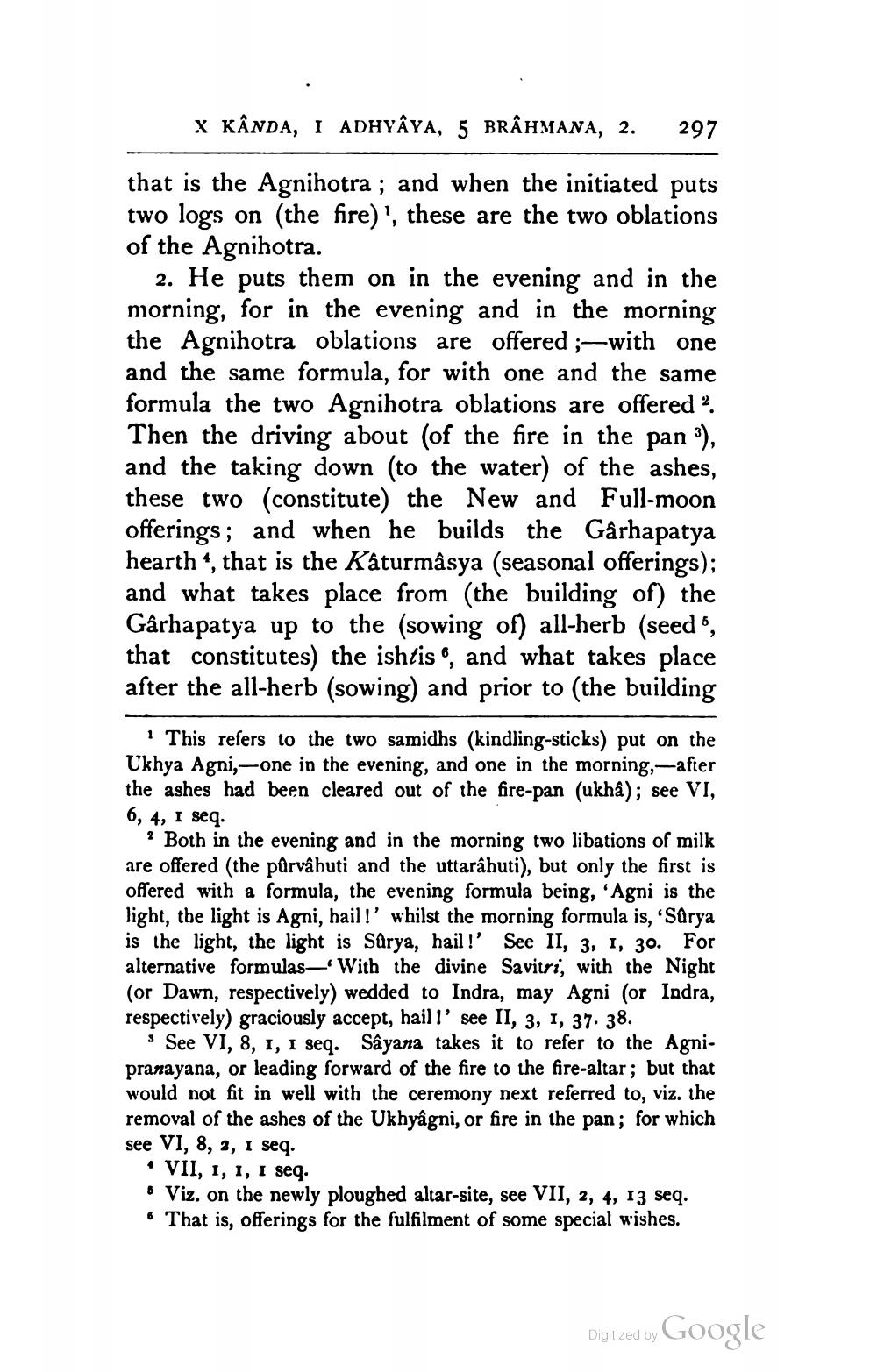________________
X KÂNDA, I ADHYÂYA, 5 BRÂHMANA, 2.
297
that is the Agnihotra ; and when the initiated puts two logs on (the fire)', these are the two oblations of the Agnihotra.
2. He puts them on in the evening and in the morning, for in the evening and in the morning the Agnihotra oblations are offered ;—with one and the same formula, for with one and the same formula the two Agnihotra oblations are offered ? Then the driving about (of the fire in the pan ), and the taking down (to the water) of the ashes, these two (constitute) the New and Full-moon offerings; and when he builds the Gârhapatya hearth “, that is the Káturmâsya (seasonal offerings); and what takes place from (the building of) the Gârhapatya up to the (sowing of) all-herb (seed", that constitutes) the ishtis ®, and what takes place after the all-herb (sowing) and prior to (the building
" This refers to the two samidhs (kindling-sticks) put on the Ukhya Agni,-one in the evening, and one in the morning,-after the ashes had been cleared out of the fire-pan (ukha); see VI, 6, 4, I seq.
? Both in the evening and in the morning two libations of milk are offered (the pûrvâhuti and the uttaráhuti), but only the first is offered with a formula, the evening formula being, 'Agni is the light, the light is Agni, hail!' whilst the morning formula is, 'Surya is the light, the light is Surya, hail!' See II, 3, 1, 30. For alternative formulas— With the divine Savitri, with the Night (or Dawn, respectively) wedded to Indra, may Agni (or Indra, respectively) graciously accept, haill' see II, 3, 1, 37. 38.
See VI, 8, 1, 1 seq. Sâyana takes it to refer to the Agnipranayana, or leading forward of the fire to the fire-altar; but that would not fit in well with the ceremony next referred to, viz. the removal of the ashes of the Ukhyâgni, or fire in the pan; for which see VI, 8, 2, I seq.
• VII, 1, 1, I seq. • Viz. on the newly ploughed altar-site, see VII, 2, 4, 13 seq. 6 That is, offerings for the fulfilment of some special wishes.
Digitized by Google




